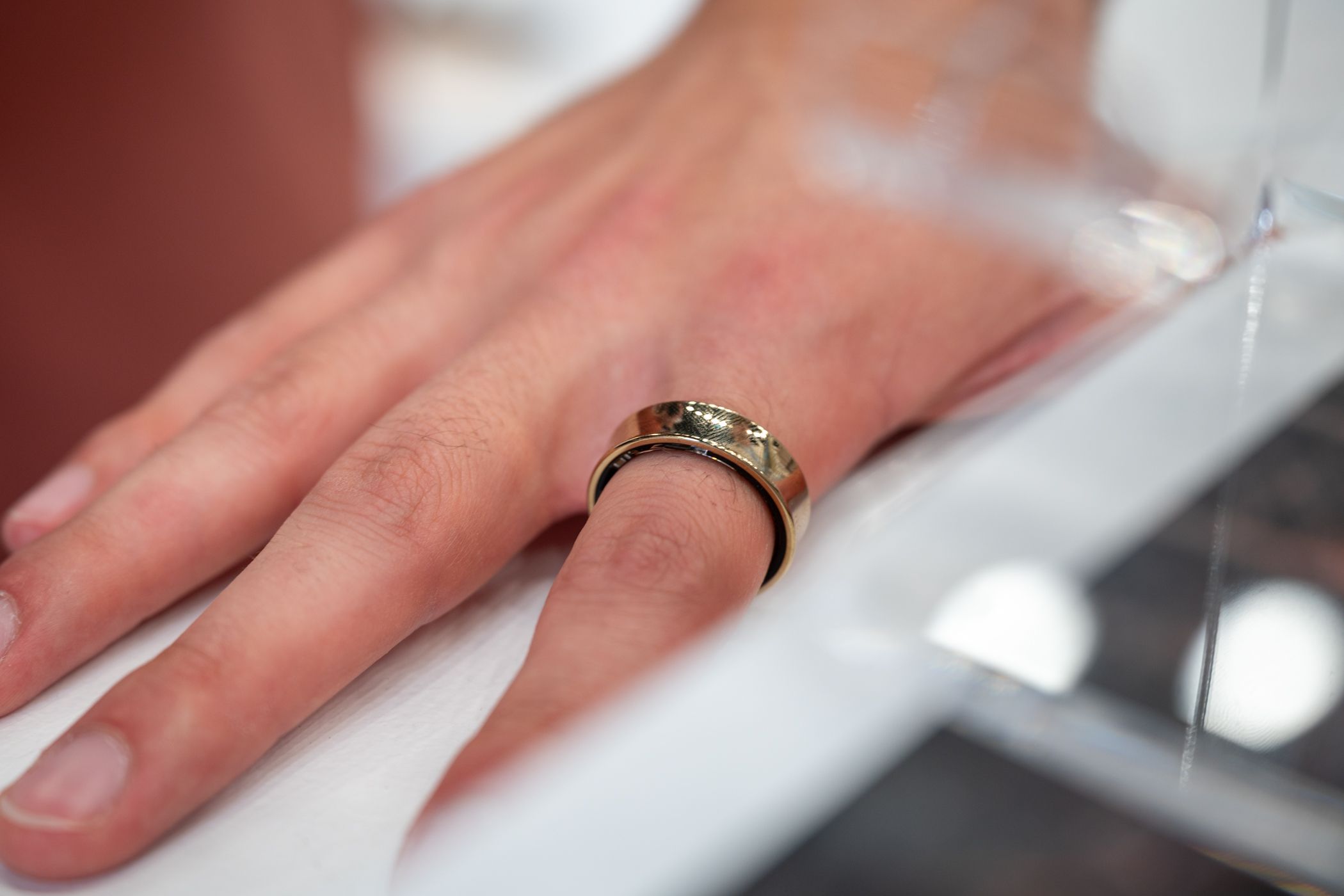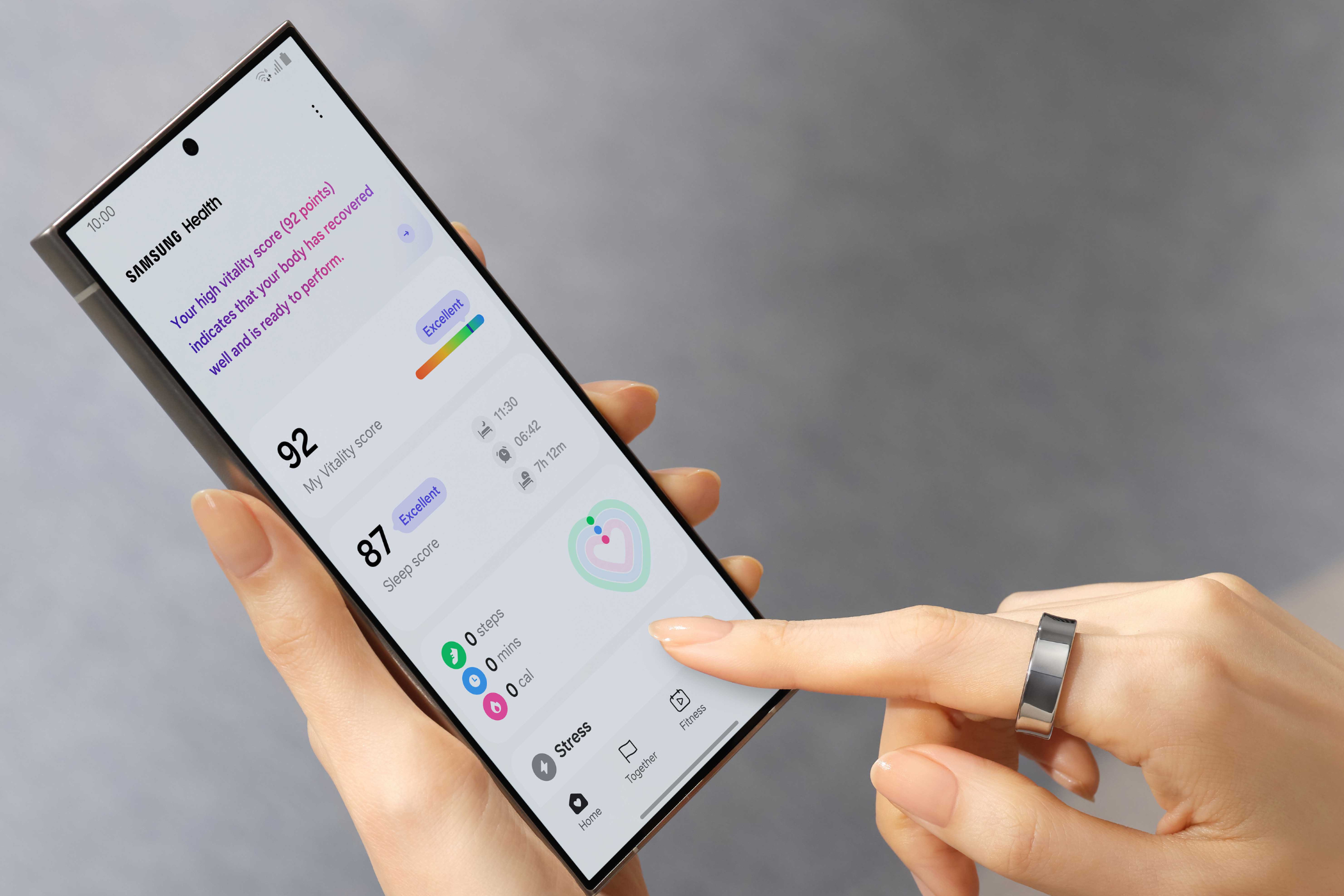Key Takeaways
- Smart rings offer seamless health tracking with in-depth features and low power usage.
- Smart rings can integrate with NFC for payments and serve as mobile microphones.
- Gesture-controlled smart rings advance connectivity with devices, providing unique UI options.
Smart Rings seem like they’re everywhere these days, and the technology is advancing far faster than we’d expected. What’s on the horizon for smart rings, and what can we expect to see in the next decade?
Health, Fitness, and Smart Monitoring
Health and fitness monitoring is easy with the sheer amount of apps we have to connect to these days. Android and iOS devices come with a built-in step tracker, but for more granular information, we’ll need other things. Smartwatches have been the go-to for health and fitness tracking, but smart rings are not that far behind.
Samsung’s new Galaxy Ring is great for health tracking, and seamlessly connects to Samsung’s fitness suite. Other rings that showed up at CES 2024 demonstrated more in-depth tracking features, all of them linking to smartphones without the bulkiness of a smartwatch screen to go with them.
Smart rings also allow users to connect them and forget about them. Their low power usage allows for seamless and interruption-free tracking. When they’re getting low, they can ping the user’s phone to let them know the current battery level in advance, so users can charge them as necessary.
With connected fitness apps, users can also plan their fitness journey and figure out what they need to do to maintain their current activity levels. Smart rings can also be used to monitor sleep, rounding out the most important things the human body needs to function.
Using Smart Rings For More Than Just Fitness
One of the most powerful reasons for getting a smart ring is integrating it with Near-Field Communication (NFC) for payments. Smart rings can act as IoT devices that are tied to your phone’s security, access control, and yes, contactless payments through NFC.
Users of smart rings already have the option to prioritize their notifications, allowing rings to vibrate when they’re getting a call or a text message. However, it’s a two-way street, as smart rings can also connect to and be used as a mobile microphone to send voice to an AI connected companion. It almost feels like you’re in Star Trek, telling the computer to search for all references to something.
There have been several sci-fi series where users have used their gestures to control digital tools. With smart rings advancing as they are, you might be able to do this sooner than later. Imagine being able to connect to your thermostat and turn your hand to the left or right to set the temperature on it!
The Nod Smart Ring was one of the earliest innovations in gesture control, but from its clunky origins, we have programmable smart rings now that can interface with a wide range of devices. The aforementioned Galaxy Ring from Samsung offers limited gesture control for certain things, but with the technology already established, it’s only a matter of time until we can use smart rings alongside gesture controls for anything we can connect to. Combining this with haptic feedback would give us a unique user interface option that could rival VR.
A New Era of Biometric Security
Many of us have had situations where we’ve been warned about a potential data breach. Sites like Have I Been Breached help users to check their email to see if they’ve been the victims of data leakage. However, by the time people check their status, it’s already too late and someone might be logged into their accounts.
Two-factor authentication or 2FA helps to mitigate some of that damage by forcing people to use an external app to generate authentication data before they can log onto a site. While it’s useful in protecting your account, it’s also a hassle to sign in to the external verification software every time you want to do something. However, what if you didn’t need to do that?
Ring manufacturer Token showed off a biometric 2FA ring that helps users keep their devices secured. Enabling 2FA will ensure that you have added security on any of the related accounts, and using a ring like this is even more security.
Smart Rings That Suit Your Needs
The latest smart rings on the market come with a variety of options for connectivity and tracking. When shopping for smart rings, there are a few things that buyers should pay attention to, including:
- Battery life: In general, smart ring battery life ranges from four to seven days, depending on the number of sensors the ring has, and how efficient it is in managing its data transfer.
- Comfort: Some rings are easier to carry around than others because of their weight. The construction material used in the ring determines how it feels on the finger.
- Durability: Most smart rings are able to withstand being dunked in water, but if you’re using them in your highly active lifestyle, some models are much better than others.
- Data collection: Rings might come with specific sensors for heart rate and oxygen saturation, but rings with more sensors tend to be more expensive.
- Specific uses: Some manufacturers focus on a subset of the market. For example, some ring manufacturers aim to provide a more effective way of predicting ovulation and periods, like the Evie Ring.
Regardless of the ring you choose, you should be aware of what you’re buying. Spend some time working out which is the best smart ring for your particular use case. In some cases, you might just be better off getting a smartwatch instead of a smart ring. As smart ring technology improves, we’ll likely see more consolidation of features, letting the same rings work for a wider variety of uses.
Are We Ready For a Smart Ring Future?
Smart rings are still in their early stages of development, but the technology has a lot of promise. Recent advances have coupled smart rings with AI chatbots to create virtual assistants that seem like something out of a science fiction series.
As more and more manufacturers throw their hats into the, uh, ring, we may be seeing an explosion in the popularity (and decrease in price) of smart rings. While they might not completely replace smartwatches, they may offer more flexibility for users. After all, you can’t gesture control your thermostat with a smartwatch, can you?






